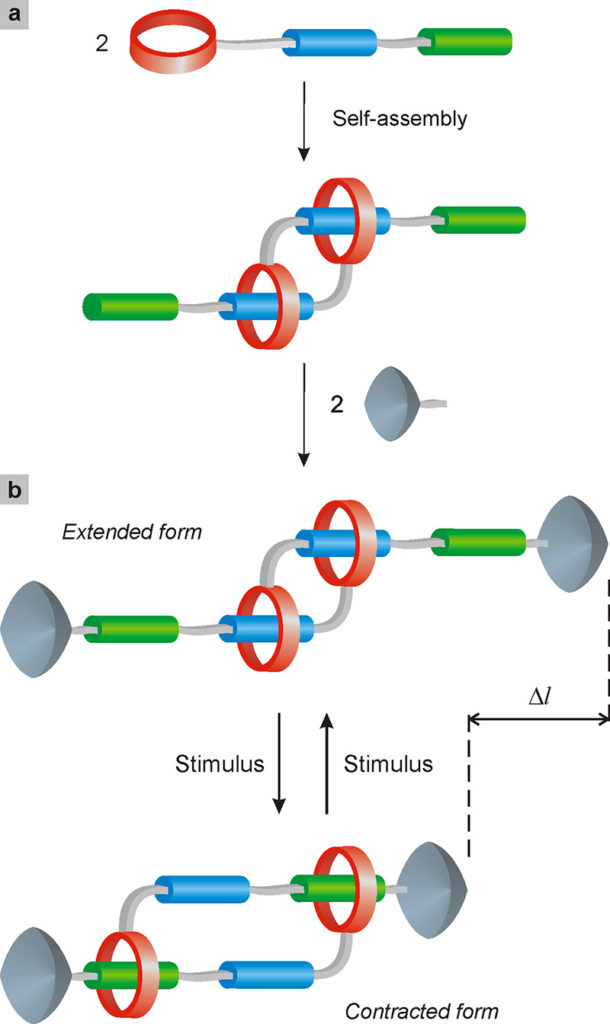Continue from previous page
Molecular muscles
Another interesting development of rotaxane-based molecular shuttles is the construction of nanomachines that can stretch and shorten on command. Since such movements recall the extension and contraction of the sarcomere, the functional unit of skeletal muscles (Fig. 10), these nanomachines are called molecular muscles. The first attempt to create a molecular muscle dates back to the year 2000, when Jean-Pierre Sauvage and his collaborators at the University of Strasbourg, in France, applied the molecular shuttle strategy to a double rotaxane with the topology represented in Fig. 23 (Jiménez 2000)1.

Fig. 23. A molecular muscle based on a double rotaxane. (a) Synthesis of the rotaxane by self-assembly and subsequent stoppering. (b) Schematic representation of extension and contraction movements. The variation in length Δl obtained in such artificial molecular muscles is about one nanometer.
The system is composed of two equal components, each consisting of a thread-like portion containing the two stations and a molecular ring at one end. Taking advantage of self-assembly, the two components are inserted one into the other; then attaching two stoppers to the free ends, the desired structure is obtained (Fig. 23a). Imagining that the starting conformation is the extended one (this implies that the primary station is the one closest to the ring of the same component, as in Fig. 23), the application of a stimulus capable of deactivating the primary station should cause displacement of the rings along the relative axes towards the secondary station, causing the system to contract. The subsequent extension would be activated by an opposite stimulus (Fig. 23b).
The experiments showed that the prototype built by Sauvage, designed to respond to electrical stimuli, does not work; probably because the molecule is overall too rigid to undergo such a profound structural change. Later, other research groups, including that of Fraser Stoddart, succeeded in developing functional molecular muscles, based on the scheme shown in Fig. 23, controlled by chemical or light stimuli (Bruns 2017)2.
As we will see in Chapter IV, by integrating these molecular muscles into polymers, materials capable of performing macroscopic movements can be obtained.



